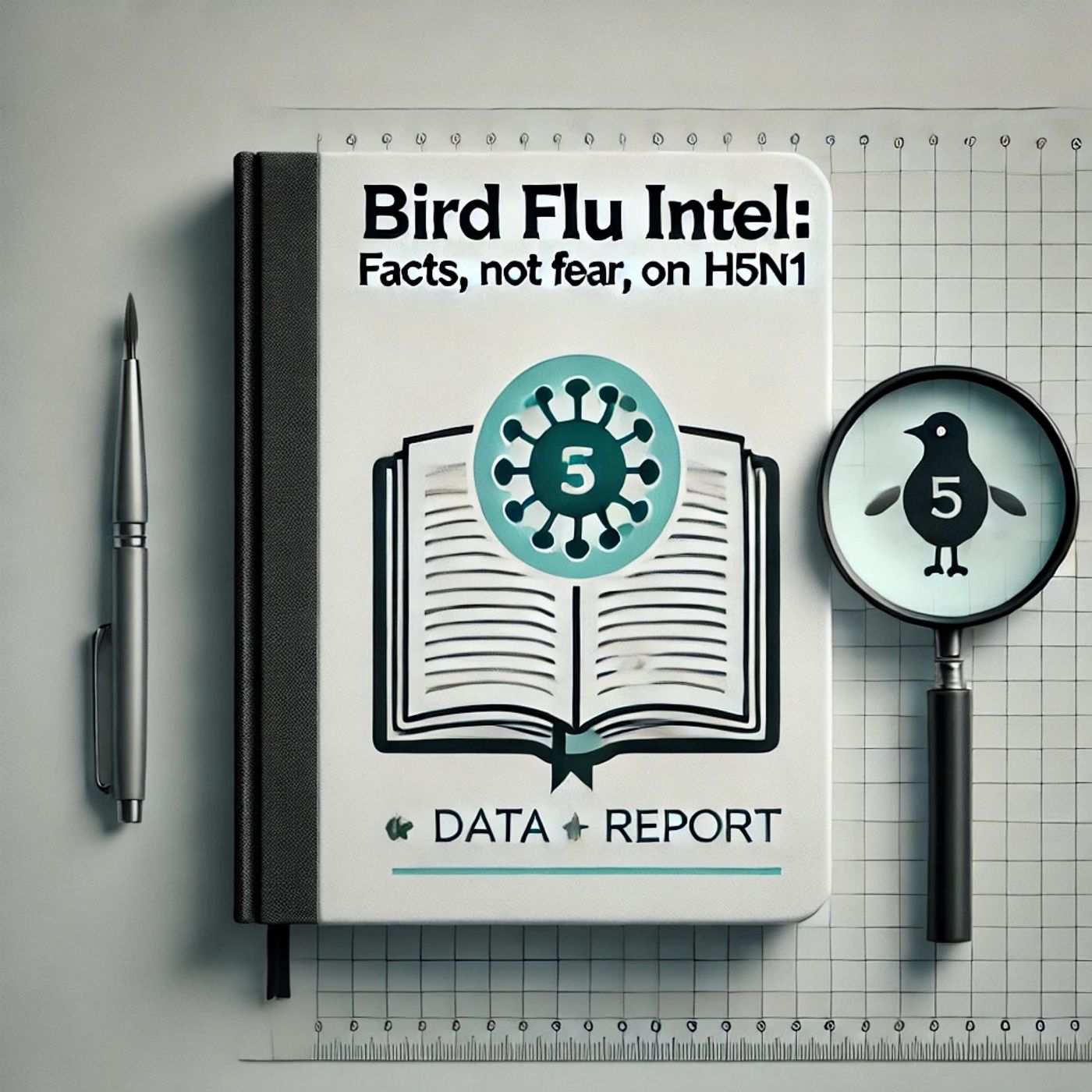Podcast Episode Details
Back to Podcast Episodes
H5N1 Bird Flu Myths Debunked: Expert Reveals Low Human Risk and Accurate Information for Public Safety
Welcome to Quiet Please. This is Bird Flu Intel: Facts, Not Fear, on H5N1—a special myth-busting episode to help you separate truth from rumor about the current H5N1 avian influenza situation.
Published on 1 week, 1 day ago
Let’s start by clearing up some of the most common myths circulating right now.
First, myth number one: H5N1 spreads easily between people and is causing a pandemic. In fact, according to the CDC and the Global Virus Network, the vast majority of human H5N1 cases in 2024 and 2025 have involved people working closely with infected poultry or dairy cows. As of August 2025, there have been just 26 human cases globally this year, and nearly all of them had direct contact with sick animals. Human-to-human spread has not been confirmed, and the CDC assesses public risk as low.
Myth two: Any H5N1 exposure is deadly for humans. The reality is that most cases in the U.S. have been mild, with common symptoms like conjunctivitis and fever. Nearly all U.S. patients have fully recovered. Severe or fatal outcomes have occurred, but overwhelmingly among people with direct, prolonged animal contact, and often with other health problems or advanced age. According to the Louisiana Department of Health and the CDC, the only U.S. fatality this year was an older adult with significant underlying health conditions following exposure to both backyard poultry and wild birds.
Myth three: Bird flu is just a problem for poultry farmers—it doesn’t affect the general public or the food supply. The Global Virus Network reports that while H5N1 is devastating for poultry farms, with over 168 million U.S. poultry culled since 2022, the impact on the general food supply is contained. There’s no evidence H5N1 spreads through properly cooked eggs or meat, and major outbreaks haven’t threatened grocery store supply chains.
Myth four: All outbreaks are being hidden or covered up. In reality, robust monitoring by U.S. and global health agencies—including the CDC, USDA, and WHO—means every new human case is publicly documented and investigated. Transparent communications are central to the response and are ongoing.
So, how does misinformation about H5N1 spread, and why does it matter? Social media can amplify fears or outdated headlines, especially when scientific findings are evolving. Viral posts sometimes misinterpret data or cherry-pick early animal studies to make alarming claims. This kind of confusion leads to unnecessary panic, can result in rash public reactions, and may even distract from practical safety steps within farms and food production.
When you hear new information about H5N1—or any health topic—pause and check the source: Is it from a government public health agency, a peer-reviewed journal, or a reputable news outlet? Double-check the date and whether the data matches what’s being claimed. Critical thinking and a healthy dose of skepticism are your best safeguards.
Where does scientific consensus stand today? Leading experts agree H5N1 remains primarily an animal disease. Human infection risk is closely tied to direct animal exposure, and there is currently no sustained human-to-human transmission. Agencies like the CDC and Global Virus Network urge heightened vigilance and improved surveillance, especially as the virus adapts to new animal hosts.
But, to be clear, some scientific uncertainty remains. Influenza viruses mutate frequently. While there is no evidence of efficient human-to-human spread yet, the possibility exists that genetic changes could make H5N1 more dangerous in the future. That’s why virologists worldwide call for coordinated monitoring, rapid reporting, and ongoing vaccine research.
Thank you for tuning in to Bird Flu Intel: Facts, Not Fear. Stay calm, stay curious, and come back next week for more science-first coverage. This has been a Quiet Please production. For more, check out Quiet Please dot AI.
For more